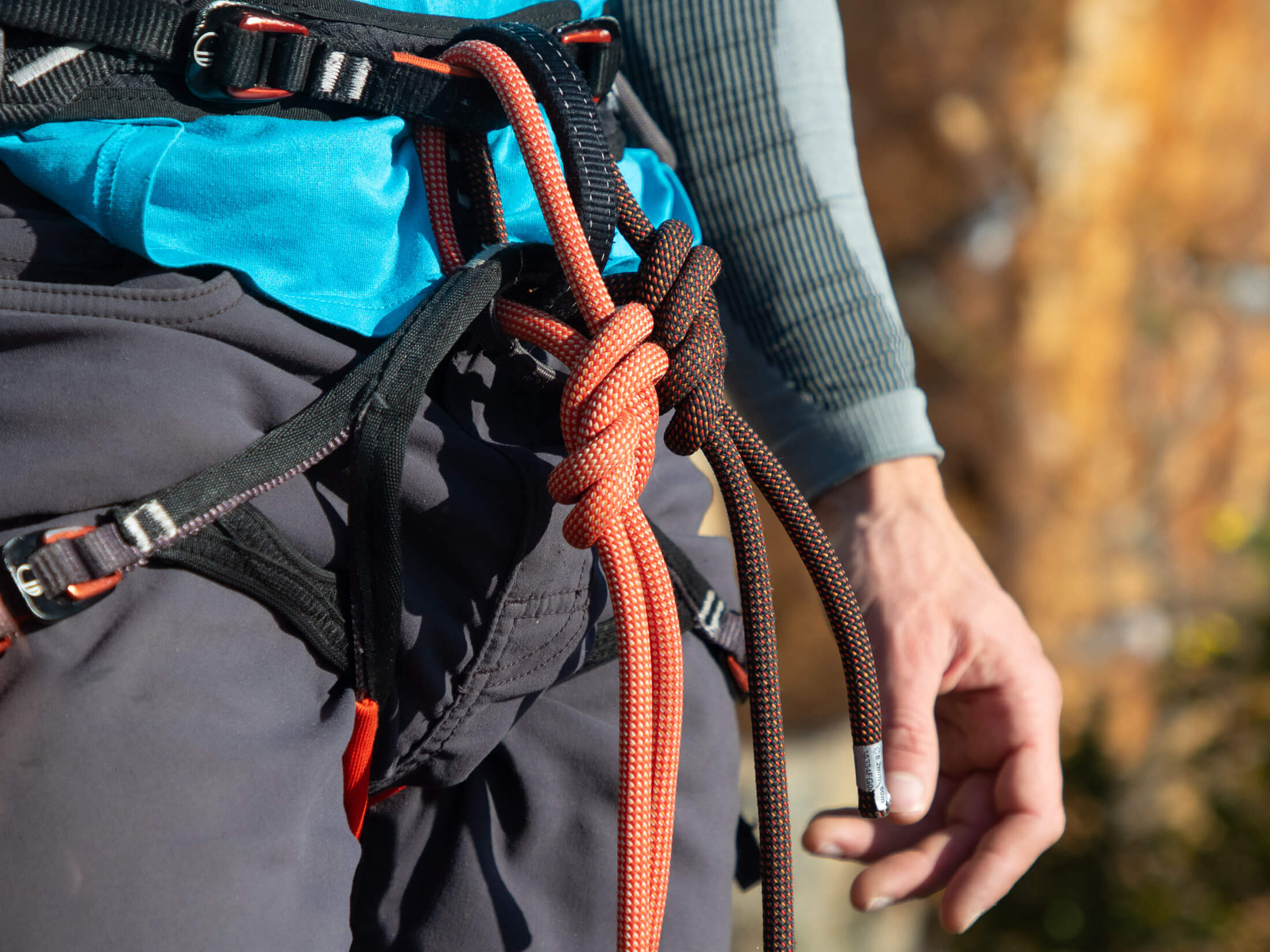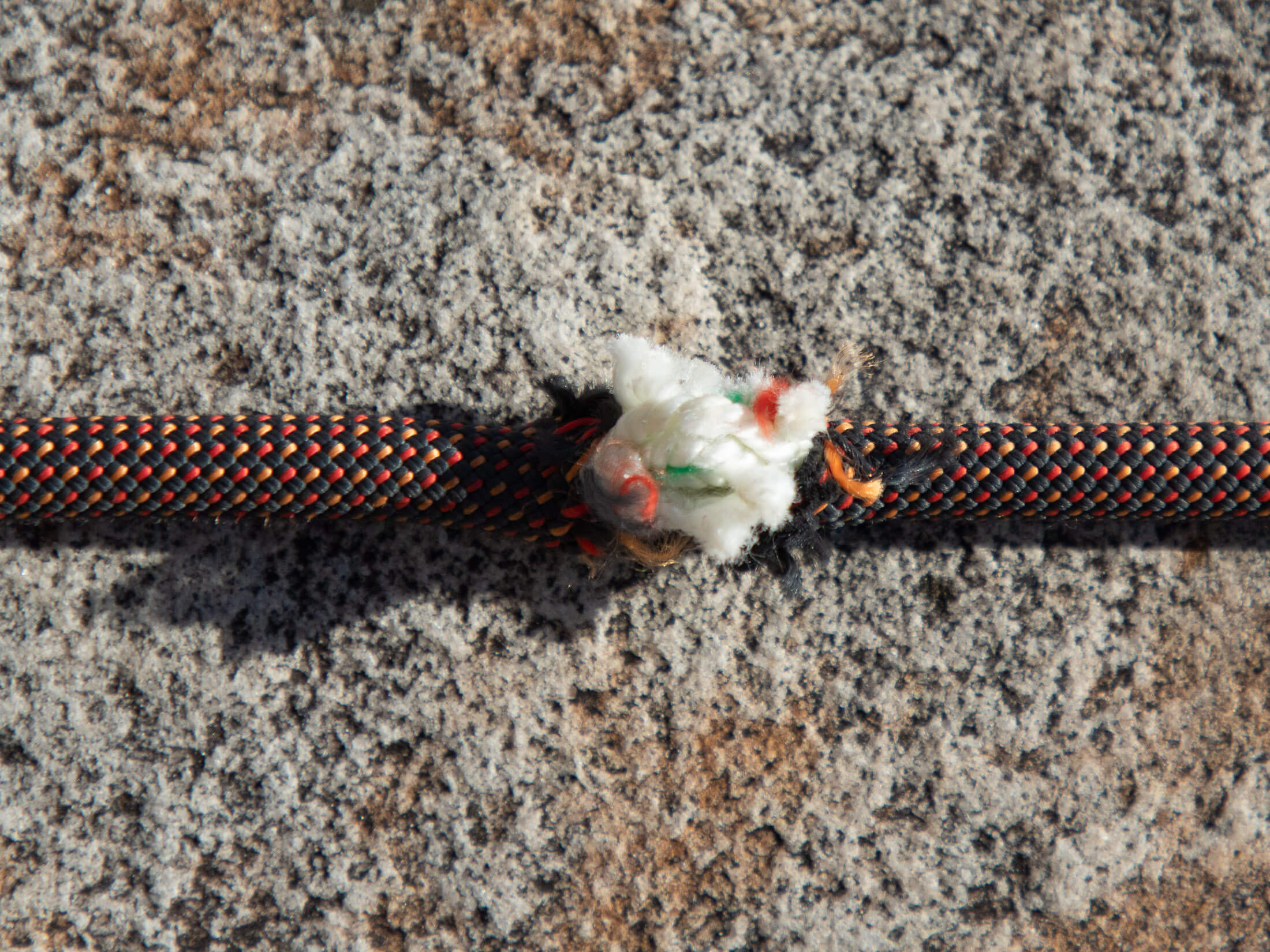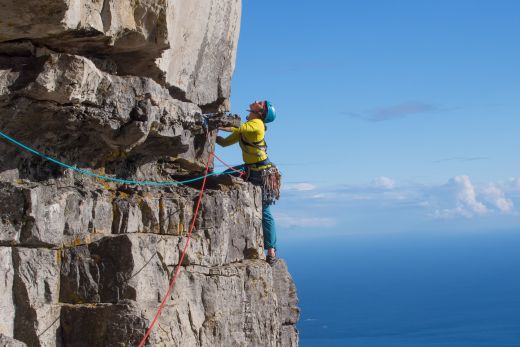For general cragging, you’re going to find few climbers using anything more than a single rope. Single ropes are just easier to use than two ropes, and then they’re less expensive too. But in the mountains, there are situations – wandering lines, suspect gear, and long rappels – where double ropes are a better choice. Then the question becomes which are better: half ropes, twin ropes, or a single rope and tag line. Twin ropes are a lot less popular than half ropes since they offer neither the flexibility of half ropes or the simplicity of a single rope. So it really comes down to a choice between two half ropes and a single rope (possibly with a tag line). In this article I will examine the pros and cons of each system. But, first let’s take another look at why you might need two ropes.
- You need to avoid rope drag on a wandering route
- You need to make longer rappels
Zig-zagging a single rope all over a meandering route can cause a huge amount of rope drag, and you don’t need that kind of handicap when you’re trying to clip the piece in the middle of a run-out crux sequence. With a double rope system, you can clip gear on the left with one rope and gear on the right with the other. This tactic keeps your rope running relatively straight and so reduces rope drag. That alone should be a good enough reason to use half ropes, but then they offer another benefit: the ability to make longer rappels. By tying two ropes together, you can make 60 m rappels (if that’s the length of your ropes). This is particularly useful on multi-pitch routes, where longer rappels can save time and allow you to reach rap anchors that can’t be reached with a single rope.
When to make double-rope rappels
Long rappels are great when the pulls are clean, but often the rock has features that raise the likelihood of the rope snagging when it’s pulled. This can be even more of a risk in high winds. In such situations, shorter rappels are often a better idea. When doing research on a route, note the length of the rappels as well as the likelihood of the rope snagging (based on the experiences of previous ascentionists). If a route has a reputation as a rope catcher, it can be a good idea to shoulder one of your ropes for the rappel, even if you lead the route on two ropes.

For double-rope rappels to be possible, successive rappels – those that would normally be made one after the other with a single rope – have to be in line, more or less. You can’t combine two rappels if the leapfrogged rappel station has been positioned left or right so that it puts you on top of the next rappel station. Again, you need to do some research to ensure that double rope rappels will put you down within reach of another rappel station.
Climbing with double ropes vs single rope
When most climbers set their sights on longer, more adventurous routes, they usually pack a pair of 60-meter half ropes. This two-rope system is very versatile in that it allows the leader to mitigate rope drag on wandering pitches and can then be used to make full-length rappels. But, the half-rope system is not the only solution for climbers who need to make longer rappels. If you don’t need to lead on two ropes, a single rope and tag line (light static rope used for making double-rope rappels) can simplify rope management in some situations.
Half ropes
The obvious advantage of two half ropes over a single rope and tag line is that you can lead with both half ropes and clip gear in a way that reduces rope drag. Thinner ropes also stretch more and so result in lower impact forces during a lead fall. This is an advantage if you want to reduce forces on marginal protection. The difference might be small – just a few kilonewtons – but it can mean the difference between a small piece ripping out or holding a fall. Climbing with both ropes also means that you don’t have the extra weight of a tag line in your pack while climbing. A tag line can be trailed by the leader or follower, but this also complicates things.

A pair of half ropes can also be advantageous when rappelling as it gives you a second dynamic rope that you can lead on or prusik up if one of the ropes gets stuck when you try to pull it. With the single rope and tag line rappel method, you have to pull the tag line, and if the single rope gets stuck while it is still out of reach, you can find yourself in a very difficult situation. You can’t climb on or prusik up a tag line.
Dual-rated ropes
If you decide that you’d benefit from using double ropes, the next question is whether you should go with half ropes or dual-rated ropes – ropes that are rated both as single ropes and as half ropes. These are generally thicker than true half ropes and so usually weigh more. But they have their benefits. Firstly, a pair of dual-rated ropes allow you to do all your climbing with just two ropes (instead of two half ropes and a single) and so can be a good idea if you want to climb some routes with a single rope and others with double ropes. Secondly, dual-rated ropes are a better option if you want to climb three up (with two followers). Rope manufacturers generally advise against belaying a follower on a single half rope. With dual-rated ropes, you can put each follower on his single rope.
Tip: Use ropes of different colours when using double rope. It will make it much easier to untangle ropes and give rope-specific instructions. ie “Rope up blue”
Single rope (with a tag line for rappels if needed)
The main advantage of a single rope is that it’s easier to climb and belay with if rope drag is not a major factor. If you don’t expect a route to wander too much and don’t need to make long rappels, your decision will probably be easy – a single rope will almost certainly make things more efficient. And if you need to make double-rope rappels, you can still use a tag line (setting up the rappel with a reepschnur hitch).
You would either tag this behind you as you climb or carry it in your pack until. And the tag line is no one trick pony. You can also use it for light hauling or pulling up a piece of gear mid-route. Maybe you don’t want to climb a hundred feet with the pair of #5’s needed for the off-width crux finish on some Vedauwoo grovel fest. No problem – just trail your tag line and then pull up your monster cams when you need them.
Factors to consider before choosing to use a tag line and single rope
But now, a caveat or two: the single rope and tag line combo is not as versatile as a pair of double ropes. You can’t climb on your tag line if your single rope gets damaged, and you can’t prusik up a tag line if it gets stuck. This makes the single rope and tag line method a poor choice in situations where a stuck or damaged rope would result in a difficult rescue – not a good option for long routes in remote areas.

Tag lines also tangle and get caught on rock features more easily than ropes, making them better suited to routes that have little for them to snag on. This is most apparent in wind, when you will want to saddle bag the tag line. Lastly, the tag line and single rope system requires a higher level of technical proficiency and experience to use safely. If you’re new to multi-pitch climbing and need to use double ropes, you’re better off using half ropes.
Given these limitations, you should tick the following boxes before choosing a single rope and tag line over a pair of half ropes:
- You don’t need two ropes to reduce rope drag
- You don’t need the redundancy of a second rope
- You anticipate clean pulls with every rappel
Get more advice from this gearhead
There’s more to tag lines and rappelling than I could fit into this article. To learn more about how to use a tag line, read my article on how to rappel with a tag line. If, on the other hand, you’re more interested in learning how to make a double-rope rappel with paired half ropes, you should read my article How to Rappel.
